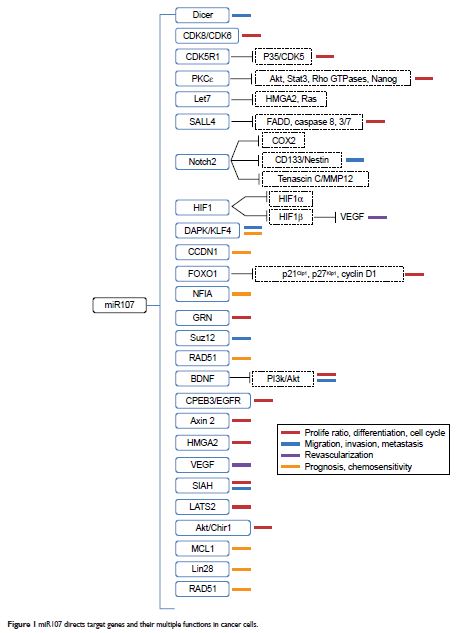9 0 8 0 2
论文已发表
注册即可获取德孚的最新动态
IF 收录期刊
- 2.6 Breast Cancer (Dove Med Press)
- 3.9 Clin Epidemiol
- 3.3 Cancer Manag Res
- 3.9 Infect Drug Resist
- 3.6 Clin Interv Aging
- 4.8 Drug Des Dev Ther
- 2.8 Int J Chronic Obstr
- 8.0 Int J Nanomed
- 2.3 Int J Women's Health
- 3.2 Neuropsych Dis Treat
- 4.0 OncoTargets Ther
- 2.2 Patient Prefer Adher
- 2.8 Ther Clin Risk Manag
- 2.7 J Pain Res
- 3.3 Diabet Metab Synd Ob
- 4.3 Psychol Res Behav Ma
- 3.4 Nat Sci Sleep
- 1.9 Pharmgenomics Pers Med
- 3.5 Risk Manag Healthc Policy
- 4.5 J Inflamm Res
- 2.3 Int J Gen Med
- 4.1 J Hepatocell Carcinoma
- 3.2 J Asthma Allergy
- 2.3 Clin Cosmet Investig Dermatol
- 3.3 J Multidiscip Healthc

miR107 在癌症网络中的多功能性
Authors Luo Z, Zheng Y, Zhang W
Received 8 September 2017
Accepted for publication 27 December 2017
Published 18 July 2018 Volume 2018:11 Pages 4113—4124
DOI https://doi.org/10.2147/OTT.S151236
Checked for plagiarism Yes
Review by Single-blind
Peer reviewers approved by Dr Akshita Wason
Peer reviewer comments 2
Editor who approved publication: Dr Faris Farassati
Abstract: MicroRNAs are short regulatory RNAs that posttranscriptionally
modulate gene expression and thus play crucial roles in controlling
cancer-onset, growth, and progression processes. miR107, a highly conserved
microRNA that maps to intron 5 of the PANK1 gene,
contributes to the regulation of normal and tumor biological processes. Studies
have reported that miR107 has oncogenic or tumor-suppressor functions in
different human tumors. The pleiotropic functions of miR107 in various cancers
are achieved via its targeting different genes that are involved in tumor
proliferation, invasiveness, metastasis, angiogenesis, and
chemotherapy-response pathways. The carcinogenicity or cancer-suppressor
effects of miR107 occur in a tissue- and cell-specific manner, and the
expression level of miR107 can be affected by various factors, including
epigenetic and genetic factors, treatment exposure, and daily diet. A
comprehensive analysis of the current literature suggests that miR107 functions
as a central element in the regulation of cancer networks and can be used as a
potential diagnostic and prognostic biomarker and drug target for therapeutic
intervention.
Keywords: microRNA,
miR107, cancer, suppressor, proto-oncogene
